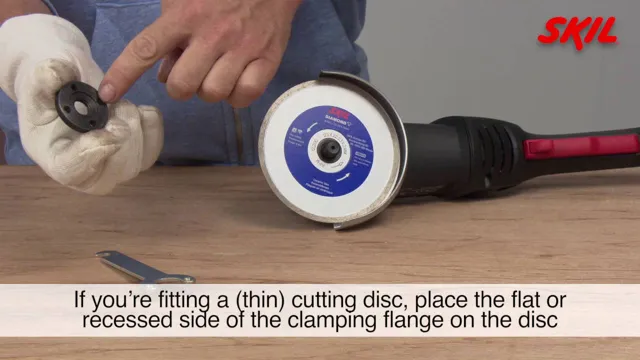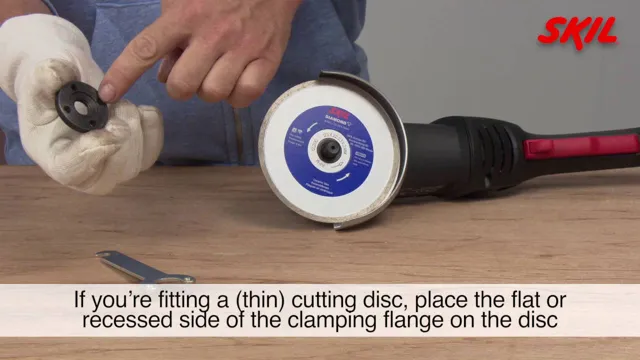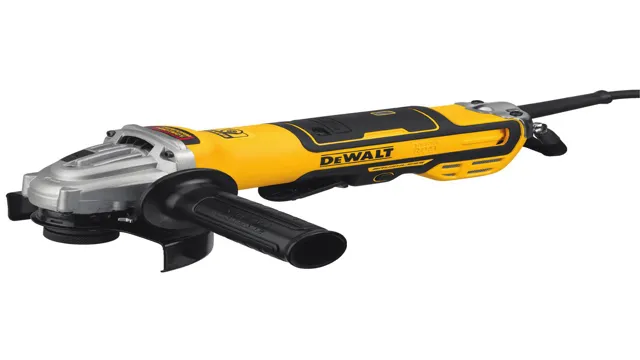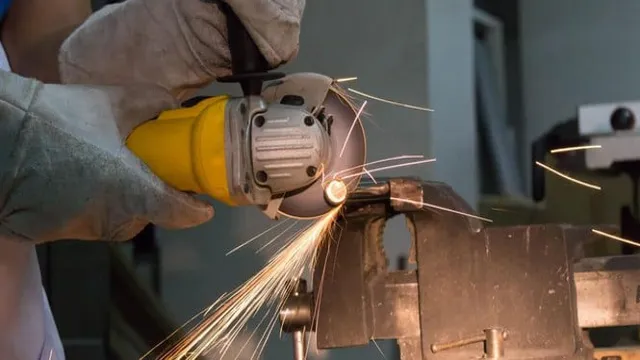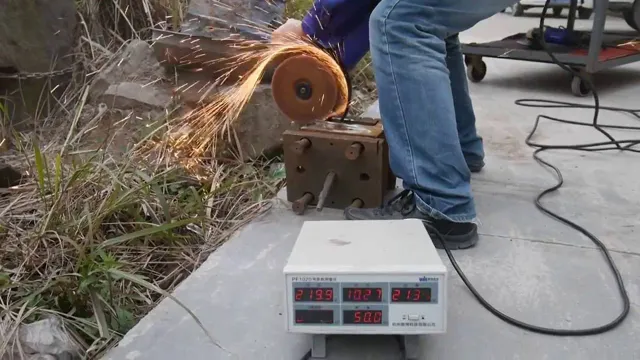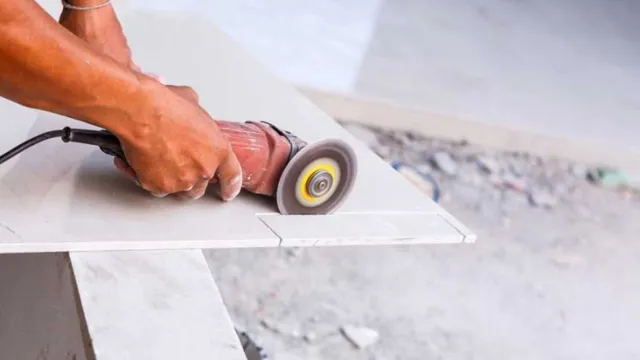How to Use an Angle Grinder to Cut Tile: A Step-by-Step Guide
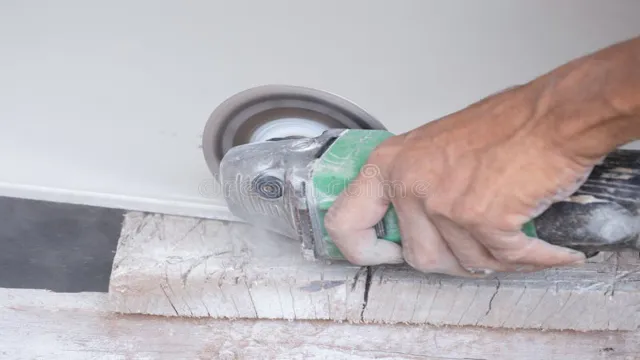
Do you have a DIY tiling project you want to tackle, but unsure of how to cut the tiles to fit your space? Look no further! Using an angle grinder to cut tile is a quick and efficient way to get the job done. An angle grinder is a versatile power tool that can handle a variety of tasks, including tile cutting. It works by spinning a disc at high speeds, allowing it to slice through tile materials.
If you have never used an angle grinder before, don’t let it intimidate you. With a few easy steps and some practice, you’ll be cutting tiles like a pro in no time. In this blog, we will guide you through the process of using an angle grinder to cut tile, offering helpful tips along the way to ensure your safety and success.
Let’s get started!
Choose the Right Angle Grinder
If you’re looking to use an angle grinder to cut tile, you need to choose the right grinder for the job. Not all grinders are created equal and you want to make sure you have the right tool to get the job done effectively and efficiently. For cutting tile, you’ll want to choose a grinder with a diamond blade, as this will give you the precision and power you need to make clean, accurate cuts.
Additionally, make sure the grinder has a good grip, as you’ll need to have control and stability while cutting through the tile. With the right angle grinder and diamond blade, cutting tile can be a breeze, allowing you to create a beautiful and professional-looking tiled surface in no time.
Select the Appropriate Blade for Tile Cutting
When it comes to cutting tiles, selecting the right blade is crucial. And, to choose the blade, you first need to have the right angle grinder for the job. With so many options available in the market, it can be overwhelming to choose the right one.
But, don’t worry, we have got you covered. The first thing to consider is the size of the angle grinder. If you are dealing with small tiles, a
5-inch angle grinder with a diamond cutting blade will suffice. But, for larger tiles, you’ll need a bigger grinder. Also, consider the power of the motor.
The more powerful the motor, the easier it becomes to cut through tough tiles. Another important aspect to consider is the type of blade you need. A diamond blade is ideal for cutting through ceramic tiles as it is durable and can handle high temperatures.
Whereas a porcelain blade is perfect for porcelain tiles as it can prevent chipping and cracking. In conclusion, choosing the right angle grinder and blade can make all the difference when cutting tiles. So, take your time, research, and invest in a quality tool for the job.
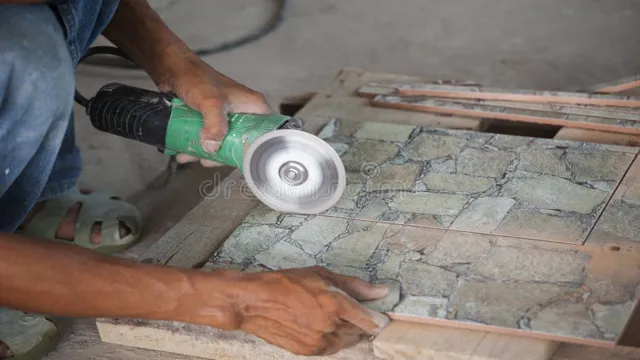
Wear Protective Gear
When it comes to working with an angle grinder, it’s essential to wear protective gear to keep yourself safe. But another crucial factor in ensuring your safety is choosing the right angle grinder for your project. You need to consider several aspects, such as motor power, disc size, and rpm settings, to make the right choice.
A powerful motor, for instance, can allow you to cut through tough materials more efficiently, but it also means you must handle the tool with more care. On the other hand, a larger disc size provides more coverage area, but it also makes the grinder bulkier and harder to handle. Overall, it’s essential to select an angle grinder that fits your project’s requirements while also ensuring your safety.
By choosing the right angle grinder and wearing the right protective gear, you can work with confidence and complete your project effectively.
Prepare the Tile
Using an angle grinder to cut tile can be a bit intimidating, but with proper preparation, it can be done easily and safely. Before beginning, it’s essential to gather the necessary tools, including an angle grinder with a diamond blade specifically made for cutting tile. Next, put on protective gear, such as safety glasses, gloves, and a dust mask, to prevent injuries from flying debris and harmful dust.
Lay the tile on a flat surface and measure and mark the area you need to cut using a pencil or marker. Ensure you have a firm grip on the tile and begin cutting using the angle grinder, following the marked lines. Make sure to maintain a straight cutting path, and move the grinder in a slow, steady motion.
It’s essential to be cautious not to apply too much pressure, as this may cause the tile to crack. Once you’ve completed the cut, use sandpaper to smooth any rough edges and remove any dust. Proper preparation is crucial when using an angle grinder to cut tile, and taking the necessary safety precautions will ensure success with your cutting projects.
Mark the Cut Line
When it comes to tiling, preparing the tile is an essential task that can make or break your project. Before cutting the tile, it’s crucial to mark the cut line accurately for precise cuts. To do this, use a straight edge or a square to draw a line on the surface of the tile where you will make the cut.
Make sure the line is visible, and double-check to ensure that it’s straight. You can also use a pencil to mark the cut line on the back of the tile if it’s a more complicated shape. By marking the cut line accurately, you can avoid costly mistakes and ensure that the tiles fit perfectly in your project.
Secure the Tile in Place
To ensure the tile is secure and won’t shift or move, there are several steps you’ll need to follow. First and foremost, you want to prepare the tile by cleaning any debris from the surface and ensuring it’s completely dry. Next, apply a layer of thin-set mortar to the surface using a notched trowel.
This will create a strong adhesive for the tile to bond to. Place the tile onto the mortar, pressing firmly to make sure it’s level and secure. If you need to adjust the position, do so quickly before the mortar sets.
Once the tile is in place, use tile spacers to maintain even spacing between tiles and allow for grouting. Keep in mind that the success of your tile installation largely depends on the proper execution of these preparatory steps. So take the time to ensure everything is in order before proceeding.
Start Cutting the Tile
So, you’ve marked the tile and set up your workspace. It’s finally time to start cutting! First things first – make sure you’re wearing your safety gear. That means gloves, eye protection, and a dust mask.
Now, take your angle grinder and walk over to your tile. Hold the tool with both hands and gently rest the blade on the tile. Be sure to keep your line of sight clear, so you can see where you’re cutting.
Start the grinder and slowly move it along the marked line, applying gentle pressure to the tile. Don’t worry if you don’t cut all the way through on the first pass – it’s better to take your time and make several shallow cuts than to go too deep and risk cracking the tile. Once you’ve made your initial cut, use a tile nipper or pliers to snap off any remaining pieces.
And just like that, you’ve successfully cut your tile with an angle grinder! Remember to take your time, wear your safety gear, and always prioritize precision over speed.
Start the Angle Grinder and Hold it Firmly
Before you start cutting, make sure the tile is secured and won’t move around. Once you’re ready, start the angle grinder and hold it firmly with both hands. The blade should be perpendicular to the tile and make contact with its surface.
Slowly move the grinder along the cutting line, maintaining a steady pace. You may need to go over the line a few times to ensure a clean cut. Remember to apply even pressure and avoid pushing too hard or the tile may crack.
It’s also important to wear protective gear such as goggles and a face mask to prevent any debris from getting in your eyes or lungs. By following these steps, you’ll be able to make precise cuts in your tiles with ease.
Make the Cut Slowly and Carefully
As you start cutting the tile, it’s important to take your time and make the cut slowly and carefully. Rushing through this step can lead to mistakes and potentially ruin the tile. Before you begin, make sure you have the necessary equipment, such as a tile cutter or a wet saw.
Once you’re ready, mark the tile where you want to make the cut and line it up with the blade of your cutter. Slowly and carefully push the tile through the blade, keeping your fingers and hands away from the cutting edge. Remember to go slow and not force the tile through the cutter, as this can cause it to break or crack.
By taking your time and being patient, you’ll end up with a clean and precise cut that fits perfectly into your tile layout.
Clean up After Cutting the Tile
When using an angle grinder to cut tile, it’s important to remember to clean up after yourself. The process of cutting can create a lot of dust and debris, so make sure to wear a mask and protective eyewear. Once you’ve finished cutting your tile, use a broom or vacuum to collect any leftover debris.
Be sure to wipe down the surrounding area as well, as tile dust can easily spread. When working with tile, it’s always better to be safe than sorry. By properly cleaning up after yourself, you’ll ensure a successful and safe DIY project.
Remember, an angle grinder is a powerful tool and should be used with caution. With the right technique and safety precautions, however, you can easily cut tiles to the perfect size for your home improvement project.
Conclusion
In conclusion, operating an angle grinder to cut tile is like being a sculptor- you must have a steady hand, a keen eye for detail, and the right tools to create a masterpiece. With these steps, you’re ready to embark on your tile-cutting journey with confidence and precision. Remember, always wear protective gear, keep a firm grip on the grinder, and keep your work area clear.
Now go forth and tackle that tile project like the DIY warrior you are!”
FAQs
Can you use an angle grinder to cut tile?
Yes, an angle grinder can be used to cut tile, but it is important to use the right blade and take necessary safety precautions.
What kind of blade should I use on my angle grinder to cut tile?
You should use a diamond blade specifically designed for cutting tile. These blades have a finer grit and are designed to cut through hard materials like tile.
What safety precautions should I take when using an angle grinder to cut tile?
It is crucial to wear safety goggles and a dust mask to protect your eyes and lungs from flying debris and dust. You should also wear earplugs to protect your ears from the noise. It’s also necessary to wear gloves and long sleeves to protect your skin from sparks and debris.
What is the best way to make a straight cut on a tile using an angle grinder?
Use a straight edge or guide to ensure a straight cut. You can also score the tile with a utility knife along the line you want to cut to provide a guide for the angle grinder.
Can an angle grinder be used to cut curves in tile?
Yes, an angle grinder with a diamond blade can be used to cut curves in tile. However, it is a technical process that requires patience and skill.
How do I avoid chipping the edges of the tile when using an angle grinder to cut it?
You can avoid chipping by using a slow, steady cutting speed and applying light pressure. You can also use painter’s tape along the cutting line to help protect the edges of the tile.
What should I do with the cut tile after using an angle grinder to cut it?
You should use a tile file or sandpaper to smooth the edges of the cut tile and remove any rough spots. Also, be sure to clean up any dust or debris generated from the cut.

